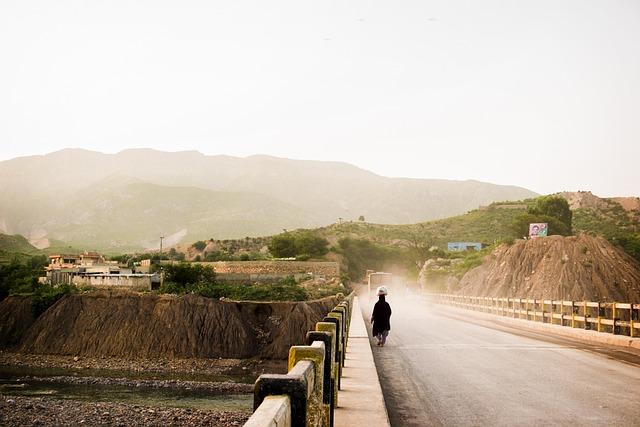In the bustling heart of urban Pakistan, cities pulse with vibrancy, diversity, and a relentless pursuit of progress. Yet beneath the surface of this dynamic growth lies a troubling phenomenon that has begun to capture the attention of residents and policymakers alike: a notable rise in theft. As the urban landscape evolves, so too do the challenges faced by its inhabitants, with socioeconomic disparities, rapid urbanization, and shifting cultural dynamics fueling an unsettling trend. This article embarks on a journey to explore the multifaceted reasons behind the burgeoning rates of theft in urban areas, shedding light on the stories and statistics that intertwine within this pressing issue. By delving into the societal factors at play and examining the responses from communities and authorities, we aim to understand not just the ‘what’ and ‘how’ of this rise, but the deeper ‘why’ that binds together the fabric of modern urban life in Pakistan.
The Socioeconomic Factors Fueling Urban Theft in Pakistan
The increasing incidence of theft in urban areas of Pakistan can largely be attributed to a complex web of socioeconomic factors that intertwine to create an environment where crime appears as a viable option for many. Economic instability plays a crucial role, with a substantial portion of the population grappling with unemployment and underemployment, making basic necessities like food, healthcare, and housing increasingly unattainable. The frustration stemming from such dire circumstances often drives individuals toward theft as a means of survival. Additionally, education inequality is another significant pillar; limited access to quality education and skill development leaves many young people ill-equipped to secure decent jobs, further perpetuating a cycle of poverty and desperation.
Furthermore, the growing urban population has outstripped the available infrastructure and public services, leading to social disorganization in many neighborhoods. With weakened community structures, people become less likely to intervene or report suspicious activities, thereby emboldening potential offenders. A lack of trust in law enforcement adds to this dilemma, causing citizens to feel powerless against crime. As highlighted in the table below, several intertwined elements illustrate how these factors contribute to urban theft rates:
| Factor | Impact on Theft Rates |
|---|---|
| Unemployment Rates | Higher rates lead to increased desperation and criminal activity. |
| Educational Attainment | Lower levels result in fewer job opportunities, fostering crime. |
| Urban Overpopulation | Increased anonymity and social disorganization fuel theft. |
| Trust in Law Enforcement | Lack of trust leads to underreporting and complacency. |

Tech Innovations: The Role of Surveillance in Crime Prevention
In the ever-evolving landscape of urban crime in Pakistan, leveraging technological innovations for enhanced crime prevention has become paramount. Surveillance systems, including CCTV cameras and drones, play a crucial role in deterring potential criminal activity. By giving law enforcement agencies real-time access to footage and data, these tools not only help in monitoring suspicious behaviors but also facilitate faster response times. Cities that have integrated comprehensive surveillance networks report a significant decline in theft incidents, demonstrating the effectiveness of proactive measures in maintaining public safety.
However, the implementation of these technologies raises important considerations regarding privacy and ethics. As the presence of surveillance expands, concerns about data misuse and overreach become increasingly prevalent. Striking a balance between safety and civil liberties is essential. Local authorities and communities must engage in dialogues to establish clear regulations on the use of surveillance technologies, ensuring they serve their intended purpose without infringing on individual rights. A collaborative approach involving both technological advancements and community feedback could pave the way for a safer urban environment.

Community Engagement: Building Local Partnerships to Tackle Theft
As urban areas in Pakistan grapple with a disturbing increase in theft, fostering strong local partnerships becomes crucial. Engaging community members, local businesses, and law enforcement can create a formidable alliance against crime. By organizing neighborhood watch initiatives and community awareness programs, citizens can work together to provide immediate support and create a safer environment. This approach not only empowers residents but also sends a strong message to potential offenders that the community is united in its commitment to combating theft.
Collaborative efforts can take many forms, including:
- Workshops on crime prevention tactics and personal safety.
- Social media campaigns that encourage reporting suspicious activities.
- Partnerships with local schools to educate youth about the consequences of theft.
- Incentives for businesses that contribute to neighborhood watch efforts.
Additionally, establishing a shared communication platform can enhance coordination among various stakeholders. For example, a simple contact table of local resources can be beneficial:
| Resource Type | Contact |
|---|---|
| Local Police Station | (123) 456-7890 |
| Community Center | (123) 333-4444 |
| Neighborhood Watch Coordinator | (123) 555-6789 |

Policy Recommendations for Strengthening Urban Safety in Pakistan
To combat the rising trend of theft in urban areas of Pakistan, comprehensive policy measures must be developed and implemented. Community engagement should be prioritized, creating awareness among citizens to foster collective responsibility towards neighborhood safety. This can be achieved through:
- Community Policing Initiatives: Enhance collaboration between police and local communities to build trust and encourage reporting of suspicious activities.
- Strengthening Local Committees: Empower local neighborhood watch groups with resources and training to monitor and report crime.
- Public Awareness Campaigns: Launch campaigns that educate citizens on preventive measures and the importance of vigilance.
Moreover, improving urban infrastructure is crucial in enhancing safety. Investments in technology and urban design can deter criminal activities significantly. Key initiatives should include:
- Smart Surveillance Systems: Implementing CCTV cameras in high-crime areas to monitor and reduce theft incidents.
- Street Lighting Enhancements: Increasing illumination in public spaces to minimize hiding spots for criminals.
- Urban Planning Reforms: Designing neighborhoods with clear sightlines and accessible public spaces to promote natural surveillance.
Key Takeaways
As we draw the curtains on our exploration of the rising trend of theft in urban Pakistan, it becomes evident that this issue transcends mere statistics and headlines. The intertwining factors of socio-economic disparity, urban migration, and law enforcement challenges paint a complex portrait of a society in flux. While the reality of theft disrupts daily life and instills fear in communities, it also serves as a catalyst for dialogue about broader structural changes needed to address the root causes of crime.
As urban landscapes evolve, so too must our approaches to fostering safety and security. It is imperative that policymakers, community leaders, and citizens alike engage in open discussions, seeking innovative solutions that empower neighborhoods and restore trust. In a tapestry of diverse experiences and voices, the path towards a safer urban Pakistan must be woven through collaboration, vigilance, and empathy.
The journey ahead may be challenging, yet it is essential. For every story of theft, there are countless tales of resilience and hope—reminding us that in the heart of adversity, community strength can prevail. As we reflect on the implications of this trend, let us strive not only to understand the issue but to act with intention and compassion, shaping a future where safety and security are not just aspirations, but realities.



